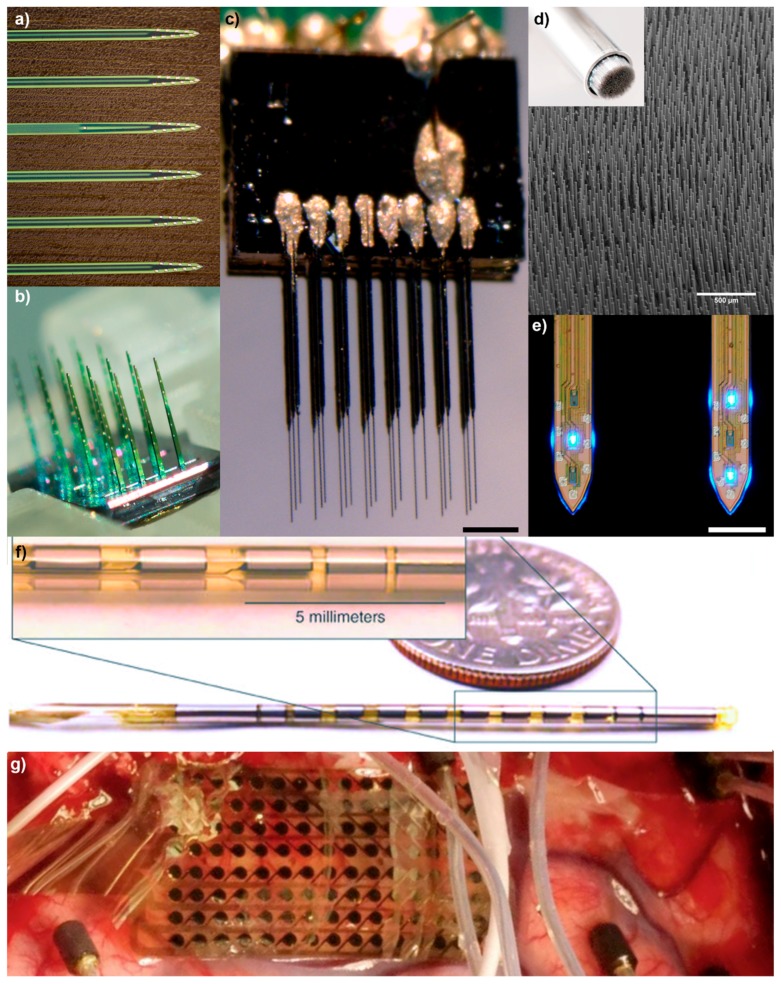Figure 2.
Advances in microscale neural interfaces: (a) 64-channel Buszaki Array (Neuronexus); (b) 128-channel Matrix Array (Neuronexus); (c) 24-channel ultra-small carbon fiber array on silicon stacks (courtesy of Paras Patel/Cynthia Chestek), scale = 100 μm; (d) high-density ultra-small microwire array (Paradromics Inc., San Jose, CA, USA), scale = 500 μm; (e) μLED silicon optoelectrode (courtesy of NeuroNex MINT Hub at University of Michigan, Ann Arbor, MI, USA (http://mint.engin.umich.edu)), scale = 100 μm; (f) a standard-sized 1.27 mm diameter Lawrence Livermore National Laboratories (LLNL) DBS-style penetrating probe constructed using microfabrication techniques, allowing for a higher-density of electrodes and avoiding typical hand-assembly techniques; and (g) A LNLL 128-channel microelectrocorticography (µECoG) array used for language mapping on awake patients. This 20-µm-thick flexible electrode array is constructed using thin-film polymers and metals and features 1.2 mm diameter electrodes.

